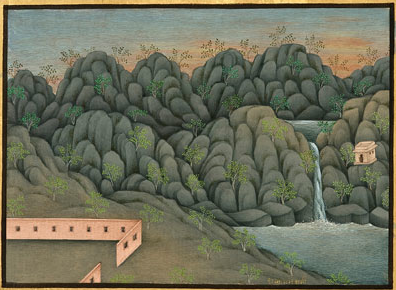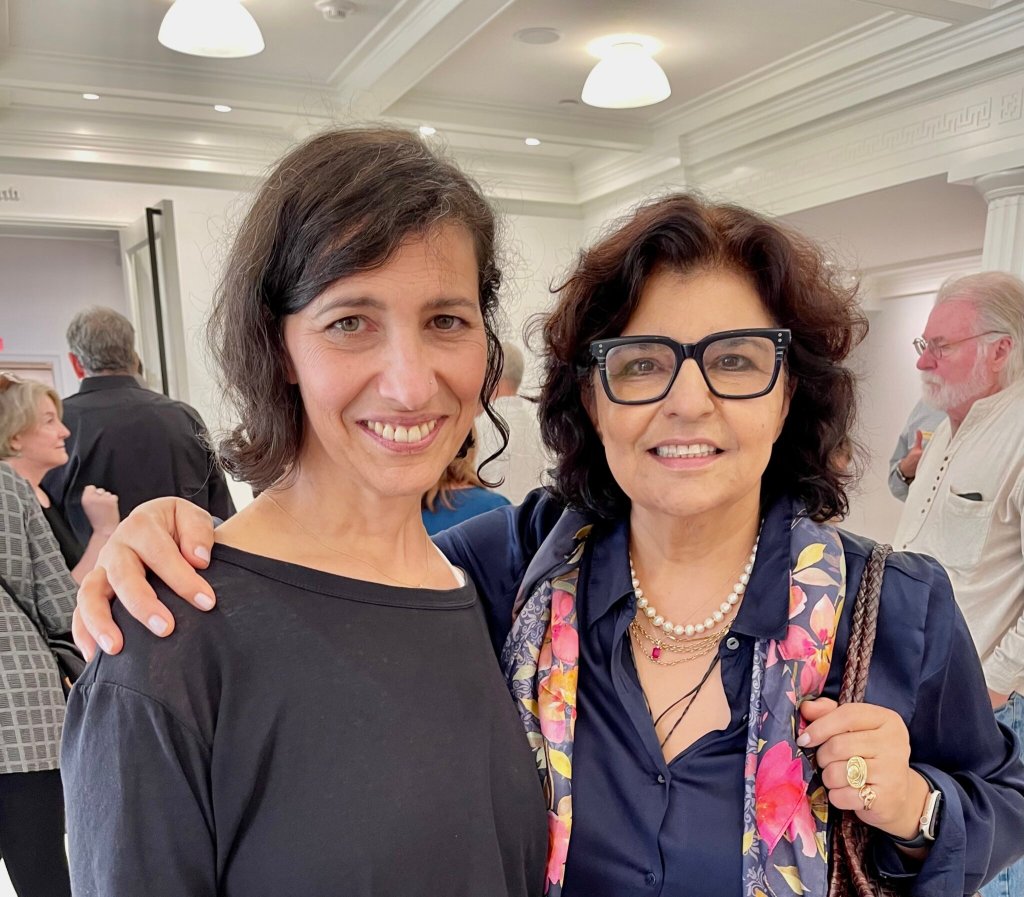Hamptons Art Review: Raja Ram Sharma

Initially lured into The Drawing Room, the beautifully Zen-like gallery on Newtown Lane in East Hampton, by their Jennifer Bartlett exhibition, I was surprised to find myself equally if not more intrigued by what was on display downstairs: a jewel-like show of exquisitely executed miniature pictures by Contemporary Rajashtani artist Raja Ram Sharma.
Trained at the Nathdwara School in Rajasthan, Sharma became a master of the traditional technique of pichwai painting, which he currently practices in Udaipur. Pichwai, so I learned, refers to the textile paintings that are hung behind figurines in the shrines of Hindu deities in temples. Oftentimes they depict scenes from legends of Lord Krishna in the form of Shrinathji, and change according to different festivals and seasons. The 17th-century process of making them, using a single-hair brush and hand-ground mineral pigment, is a ritual in itself and the artist’s finished work becomes an offering to the god or goddess.
While not giving up his practice of pichwai, Sharma adapted the teachings of Nathdwara painting to suit his own artistic expression, taking a departure from figures of Hindu deities in favor of landscapes that oftentimes include rivers, temples, animals, and boats; fusing nature with what is man-made and ancient with present day.
What is striking about this group of paintings is that while the process would be, to me, painstaking to say the least, there is an air of lightness to them, as if the artist himself was truly enjoying each precise and microscopic application of paint. By contrast, one might even say that Jennifer Bartlett’s obsessively applied dots on grids seem hurried. Here, there is a softness that subtly evokes a spiritual state of being, perhaps a quality inherited from the pichwai tradition. The palette is somewhat cool and muted, with lush greens, grey-blues, and stark white temples, differentiating from some of the warmer and bolder hues used in the pichwai figures.
As relayed in the press release, the artist’s concern with the perilous water supply in Rajasthan is a chief theme within the work. However, this dialogue is not overt. The omission of narrative allows for the viewer to encounter and experience each painting within the realm of his or her own perception, whereby flowing rivers could signify the passage of time, change or any quality the element of water owns. As a pictorial device, the blue water, in various shades, allows space between hillsides and links, in it’s mirroring hue, to the sky above.
The perspective, flat with the impression of everything falling towards you or towards the bottom edge, somewhat calls to mind the late 15th century illuminated manuscript Très Riches Heures du Duc de Berry, which depicts the toils of the month of June outside the palace walls and is quite familiar to your average Medievalist, if there is such a thing, as being the cover of Umberto Eco’s Art and Beauty in the Middle Ages. Similarly to this Book of Hours example, Raja Ram Sharma’s Study III, 2012, utilizes line and color to create simultaneous movement and balance. As a river curves down to the lower edge of the picture plane we are stopped by two bright red boats, their oars pointed diagonally back upward to the temple above whereby we can begin to make our way back down the river, thus going around and around in a circle for as long as one pleases, stopping and starting at any point. Along the way, the eye is tempted to slow down and observe the little brushstrokes, if one can use the word so freely.
Post-postmodernist critics might be cringing at my description of the eye’s actions but in this instance it seems appropriate and accurate, as there seems to be a devotional quality to the work; a person might be brought into it only through a slowing down of the eye and through the aforementioned circular movement. What could be more seasonally fitting, as we move into a quieter time on the East End, than an invitation to adjust our pace, observing the fantastic details in our own landscapes as the colors of the ocean and sky begin to change and crispness of the air sharpens the focus of the passing summer haze.
The Drawing Room is located at 66 Newtown Lane in East Hampton. Call 631-324-5016 for more information.



